The Charismatic Serial Killer Archetype, Part 1:
The Epidemic of Serial Killers
The Villain of “Venom 2” Will Be Yet Another Charismatic Serial Killer
I saw the movie “Venom” (2018) a few months ago on opening weekend and started working on this post shortly afterwards. This post is not a review of that movie.[1]For the record, I liked “Venom” (2018) and predict that most fans of the character will enjoy the movie. “Venom” (2018) got me thinking: Venom is anthropomorphic Orca.

Venom is bulky, muscular and slimy, and his black skin is decorated with lidless white eye-spots. He also has rows of pointy teeth and a long tongue. Venom loves violence, especially in the form of chomping things.
No, I’m kidding! That’s a joke!
What started my thinking was actually “Venom” (2018)’s post-credits teaser. Here’s a small spoiler: the teaser hints that Venom’s most famous enemy, Carnage, will be featured in the next film.
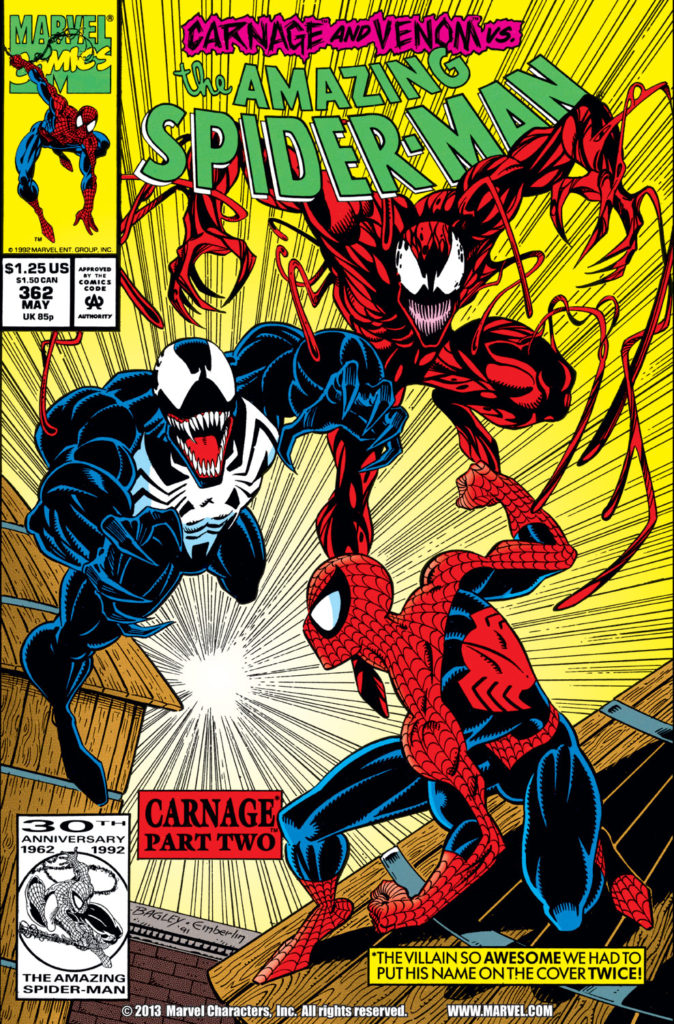
Venom and Carnage were both originally Spider-Man villains, but over the years have sort of become their own thing. “Venom” (2018) had nothing to do with Spider-Man.
By his appearance, Carnage is basically a red-colored variant of Venom. But in personality, Carnage is quite different. According to the comic books, both Venom and Carnage are created from ordinary human men who transform into these monsters after their respective black and red symbiotes[2]Alien slime/goo creatures. infest their bodies. Despite this similar origin, Venom has a personal code of honor that lets him pretend to be a misunderstood anti-hero. Carnage is straight-up a psychotic serial killer who loves to murder and create chaos.[3]Another difference is that Carnage is written to be far more powerful than Venom. In addition to all the powers possessed by Venom, Carnage can shape his gooey body into slicing and stabbing weapons and launch sharp projectiles. I can’t help but think that these extra powers were inspired by … Continue reading
Carnage does not appear in “Venom” (2018), but the ordinary man who will eventually become Carnage, Cletus Kasady, does. In the post-credits teaser, the Kasady character appears as an imprisoned serial murderer who is lethally dangerous even while imprisoned. Eddie Brock, the once-ordinary man who can transform into Venom, is there in his capacity as a reporter to interview Kasady for some vague reason.
Patient Zero: Dr. Hannibal Lecter
There’s no reason to wait: the scene reminds me of “The Silence of the Lambs” (1991). Specifically, the scenes where FBI Agent Clarice Starling’s visits psychiatric prison to interview the serial killer Dr. Hannibal Lecter.[4]Although popular memory has built up the importance of the Hannibal Lecter character in that film, his role is relatively minor in the story and takes up something like merely 10 minutes of screen-time. “The Silence of the Lambs” (1991) is mostly about Agent Starling’s effort to … Continue reading To me, the comparison is obvious. The very concept of interviewing an imprisoned serial killer is probably enough to make me think of “The Silence of the Lambs,” but the smaller details in “Venom” (2018) also call Dr. Hannibal Lecter to my mind. The buildup, the way the scenes are shot, and other difficult-to-describe visual aspects all push my thoughts in that direction. But the strongest resemblance comes from how Woody Harrelson portrays Cletus Kasady as a charismatic killer who is completely confident that he will leave prison to murder once again.
The serial killer character archetype (charismatic or not) endlessly fascinates the popular imagination. This character appears in every medium and in many different genres (action, comedy, horror, etc.).[5]Although I am American and disproportionately base my view on English-language narrative works, my limited experience with non-English art greatly reinforces my perspective because even I, with my limited experience, have encountered this character in many non-English works. This character archetype is so common that we can break the concept into two types: the charismatic and non-charismatic serial killer.
- A non-charismatic serial killer character is usually a creepy, repulsive man who would not fit into society even if he avoided criminal acts.
- A charismatic serial killer is usually an interesting, impressive man who might be welcomed into society if he avoided criminal acts.
Of the two, I think the charismatic serial killer is the more popular, even wildly popular—so popular that I think most people do not even recognize this character when they see him (because he is so common that he is taken for granted).
Evidently, the “Silence of the Lambs” had a powerful effect on the imagination of the creators of comic books, movies, and other pulpy visual media, because I see afterimages of Anthony Hopkins’s charismatic performance of Dr. Hannibal Lecter all. the. time. In fact, I’ll go as far as to say that Anthony Hopkins’ masterful portrayal of Dr. Hannibal Lecter in “The Silence of the Lambs” (1991) has defined this character archetype for the last 3 decades.
A story merely featuring a serial killer is usually not enough to make me think of “The Silence of the Lambs” (1991). But there is a specific, frequently-used situation that does: the villain is imprisoned, and yet from prison he exerts all sorts of psychological power over the protagonists. The protagonists have to talk to the imprisoned villain for some contrived reason, and with his powers of charisma and manipulation, his mere words are enough to defeat and control the protagonists. This is a ridiculously specific idea, yet it appears in all manner of pulp writing.
For characters that do not start out in a jail (as Dr. Hannibal Lecter does), the writers will have the heroes jail the villain at some middle point in the story—apparently just to create this situation. For example, in the very popular superhero movies “The Dark Knight” (2008) and “The Avengers” (2012), the respective villains (The Joker and Loki) allow themselves to be captured and jailed, apparently just to have the opportunity to torment and manipulate the heroes from inside the prison (and of course, like Dr. Hannibal Lecter, they escape). The same thing happens with Khan in “Star Trek Into Darkness” (2013).
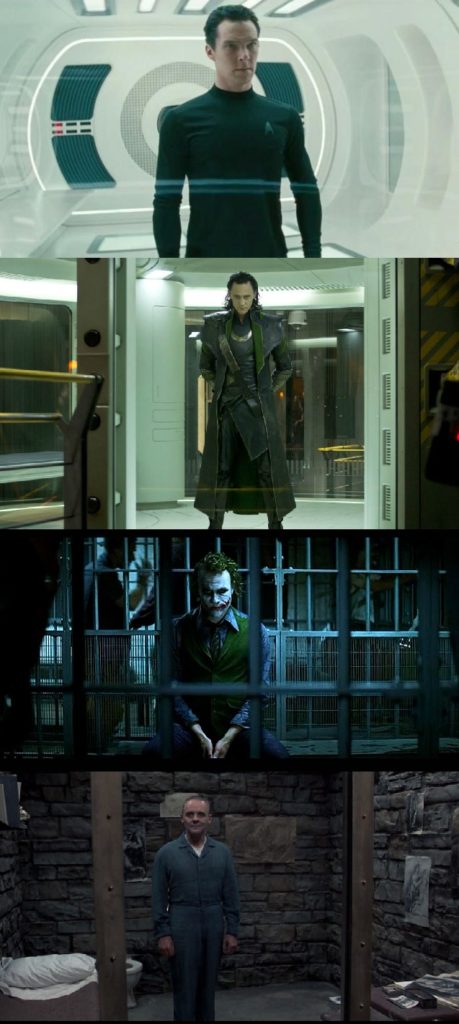
Directors love to introduce imprisoned villains with this shot. This shot comes from “The Silence of the Lambs” (1991). Anthony Hopkins, who played Lecter, said that he came up with the idea of introducing his character standing at attention (a creepy, brilliant idea). This oddly-specific idea is still being copied 20+ years later in “Avengers” (2012) and “Star Trek: Into Darkness” (2013), down to the glass-wall prison. And the copying goes beyond the visuals: the entire concept of the scene is that the villain’s mere words can control everything.
The Epidemic of Serial Killers
While I wish I could point to smoking-gun evidence to support my claims about the influence of “The Silence of the Lambs” (1991), most evidence of what inspires content creators is merely circumstantial (that is, all you can do is think about some data points and make inferences). In my experience, artists often don’t even know where their ideas came from, and rarely admit to “ripping off” their predecessors. But all artists have influences, and serial/pulp writers (who must produce new content constantly) are especially keen on reworking popular ideas.
For a relevant example, I have included an image of The Joker from “The Killing Joke” (1988) (one of the most widely-read individual Batman comics) and an image from “The Amazing Spider-Man #344” (1991), which introduces Cletus Kasady (the serial killer who becomes Carnage).
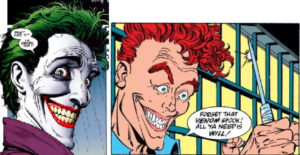
A juxtaposition of images of The Joker from “The Killing Joke” (1988) and Cletus Kasady from “The Amazing Spider-Man #344” (1991) produces an inference that Kasady’s appearance was inspired by The Joker.
Usually, the following sort of circumstantial evidence is all we would ever have:
- “The Killing Joke” (1988) was extremely successful, critically and commercially. Many comic book fans (which includes comic book artists!) would have seen that comic.
- Cletus Kasady’s first published appearance was a few years later.
- The resemblance is undeniable.
In a rare exception, the original designer for Cletus Kasady admitted to basing the character’s look on The Joker. But even if the designer had not flat-out stated that he was trying to make a character who looked like The Joker, I think there would be enough circumstantial evidence to conclude that this is what the artist must have been doing.
Anyways, the point I’m trying to make is that this kind of content (comic books, action movies, etc.) is so recursive and self-referential that one should just presume that the artist got some or all of the idea from an earlier work. If you see something really unfamiliar, you should ask yourself “Which unknown source did these ideas come from?” instead of presuming that the artist created the work out of nothing.
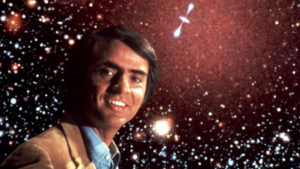
“If you wish to [write an original story], you must first invent the universe.” – Carl Sagan (sort of)
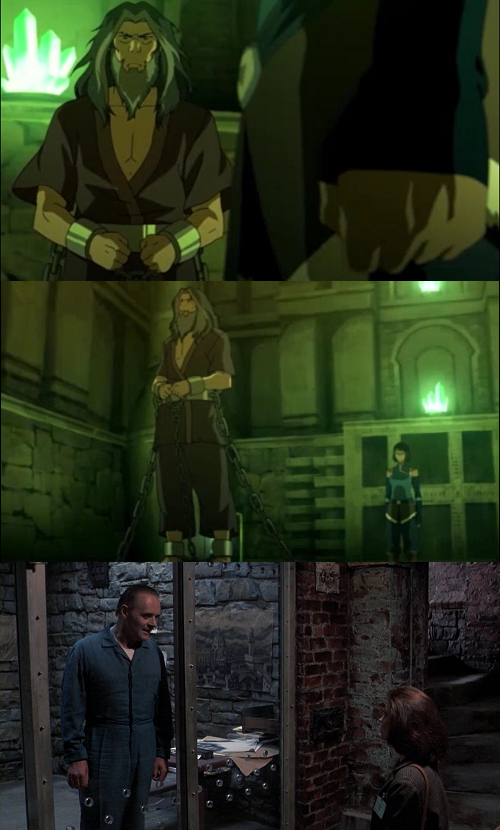
These scenes are composed of so many similar ideas I’m not sure I can list them all. In both scenes, the imprisoned serial killer decides to help the young woman protagonist against another serial killer. Zaheer lunges at Korra to get a rise out of her (it works) and Hannibal makes the creepy sucking noise for the same reason (it works). Both villains patronize the woman protagonist for being fearful.
Even if the writers of “The Legend of Korra” (2012-2014) were not consciously intending to evoke Dr. Hannibal Lecter, even if the writers had never even seen “The Silence of the Lambs” (1991), I say with some confidence that the ideas for the Zaheer prison-visit scenes in “The Legend of Korra” (2012-2014) originate in “The Silence of the Lambs” (1991). The similarities are just too specific to be coincidental. Even if the writers did not emulate “The Silence of the Lambs” (1991), the writers were emulating, consciously or unconsciously, some other work that was (which is plausible because the Hannibal Lecter scene is ever-present in the pulp media that the writers for “The Legend of Korra” (2012-2014) would have consumed).
Now don’t get me wrong here: I think “The Silence of the Lambs” (1991) is a great film, particularly the Dr. Hannibal Lecter parts.[8]I enjoyed the movie so thoroughly as a teen that I purchased and read a book from the series of novels the movie is based on. I also think that borrowing from successful works is a great tool for pulp fiction writings (especially serial stories like comic books, where there is a constant need for new characters).[9]Indeed, I think Zaheer is the best villain character in “The Legend of Korra” (2012-2014), and probably one of my favorite villains from any medium. Sometimes Batman fights Dracula, and sometimes Batman fights Hannibal Lecter.[10]Maybe by the name Victor Zsasz?
So Hannibal is Everywhere… But Why?
I’m not criticizing artists for borrowing ideas from other works. But after I saw a Hannibal Lecter scene for the umpteenth time in the post-ending teaser in “Venom” (2018), I started thinking a lot harder about the meaning of this character archetype, the charismatic serial killer. I pondered why Carnage, and characters like Carnage, are so popular. After all, the point of the teaser for “Venom 2” is to make you excited to see Venom fight a “Hannibal Lecter” doppelganger.
My intuition? Many writers and audience members now consider the charismatic serial killer to be one the “coolest” characters there is.
This thought makes me uncomfortable, and I have ruminated on it for some time now. This is my first post in a series examining the “Charismatic Serial Killer.” Click here for Part 2.
Footnotes
| ↑1 | For the record, I liked “Venom” (2018) and predict that most fans of the character will enjoy the movie. |
|---|---|
| ↑2 | Alien slime/goo creatures. |
| ↑3 | Another difference is that Carnage is written to be far more powerful than Venom. In addition to all the powers possessed by Venom, Carnage can shape his gooey body into slicing and stabbing weapons and launch sharp projectiles. I can’t help but think that these extra powers were inspired by the T-1000 villain from “Terminator 2: Judgment Day” (1991) (which I previously reviewed). The T-1000 is a monster made of liquid metal that can similarly reshape its body into knives and stabbing weapons. My inference is reasonable because Carnage did not appear until 1992. Furthermore, the pop-cultural impact of “Terminator 2” is tremendous; 25 years later, writers are still referencing that movie in such unrelated films as the animated parody “Sausage Party” (2016) (in which a piece of bubblegum reforms its body to a musical allusion to the T2 soundtrack). Maybe this is getting into too much detail for a footnote, but in “Venom” (2018) the villain symbiote Riot (who, oddly, has most of Carnage’s powers from the comic books, so for the purposes of my point Riot takes the place of Carnage) is characterized and filmed like the T-1000 villain from “Terminator 2” (1991). Both villains are portrayed as stilted, creepy stalkers who impersonate other people in order to sneak around in plain sight. Both villains march single-mindedly towards their simple goal. Watch the scene from “Venom” (2018) in which Riot changes his host woman’s arm into a stabbing weapon and tell me you’re not reminded of the T-1000! |
| ↑4 | Although popular memory has built up the importance of the Hannibal Lecter character in that film, his role is relatively minor in the story and takes up something like merely 10 minutes of screen-time. “The Silence of the Lambs” (1991) is mostly about Agent Starling’s effort to bring a completely different serial killer to justice. Subsequent movies and shows featured Hannibal Lecter as a main character and protagonist after Anthony Hopkins’ performance elevated the character’s popularity. |
| ↑5 | Although I am American and disproportionately base my view on English-language narrative works, my limited experience with non-English art greatly reinforces my perspective because even I, with my limited experience, have encountered this character in many non-English works. |
| ↑6 | ”The Silence of the Lambs” (1991) is a sequel to the novel “Red Dragon” (1981), adapted first as “Manhunter” (1986) and remade as “Red Dragon” (2002), in which Dr. Hannibal Lecter’s capture and initial imprisonment are described. During “The Legend of Korra” Season 3 (2014), the heroes capture the charismatic-anarchist-murderer Zaheer and he is imprisoned for the rest of the series. |
| ↑7 | Often, but not always, a woman protagonist is used for this kind of scene. I think this emphasizes the scene’s origins in “The Silence of the Lambs” (1991), but also adds a layer of depraved sexism into the writing. For example, there was only one woman avenger in “The Avengers,” but that was the character who visited Loki to go be tormented by him while he was imprisoned. I appreciate that Black Widow turned out to be the one tricking Loki, but the surprise in this reversal is possible because of the audience’s expectations about how a Hannibal/Clarice scene is supposed to work (after years of consuming imitations that play it straight). |
| ↑8 | I enjoyed the movie so thoroughly as a teen that I purchased and read a book from the series of novels the movie is based on. |
| ↑9 | Indeed, I think Zaheer is the best villain character in “The Legend of Korra” (2012-2014), and probably one of my favorite villains from any medium. |
| ↑10 | Maybe by the name Victor Zsasz? |
